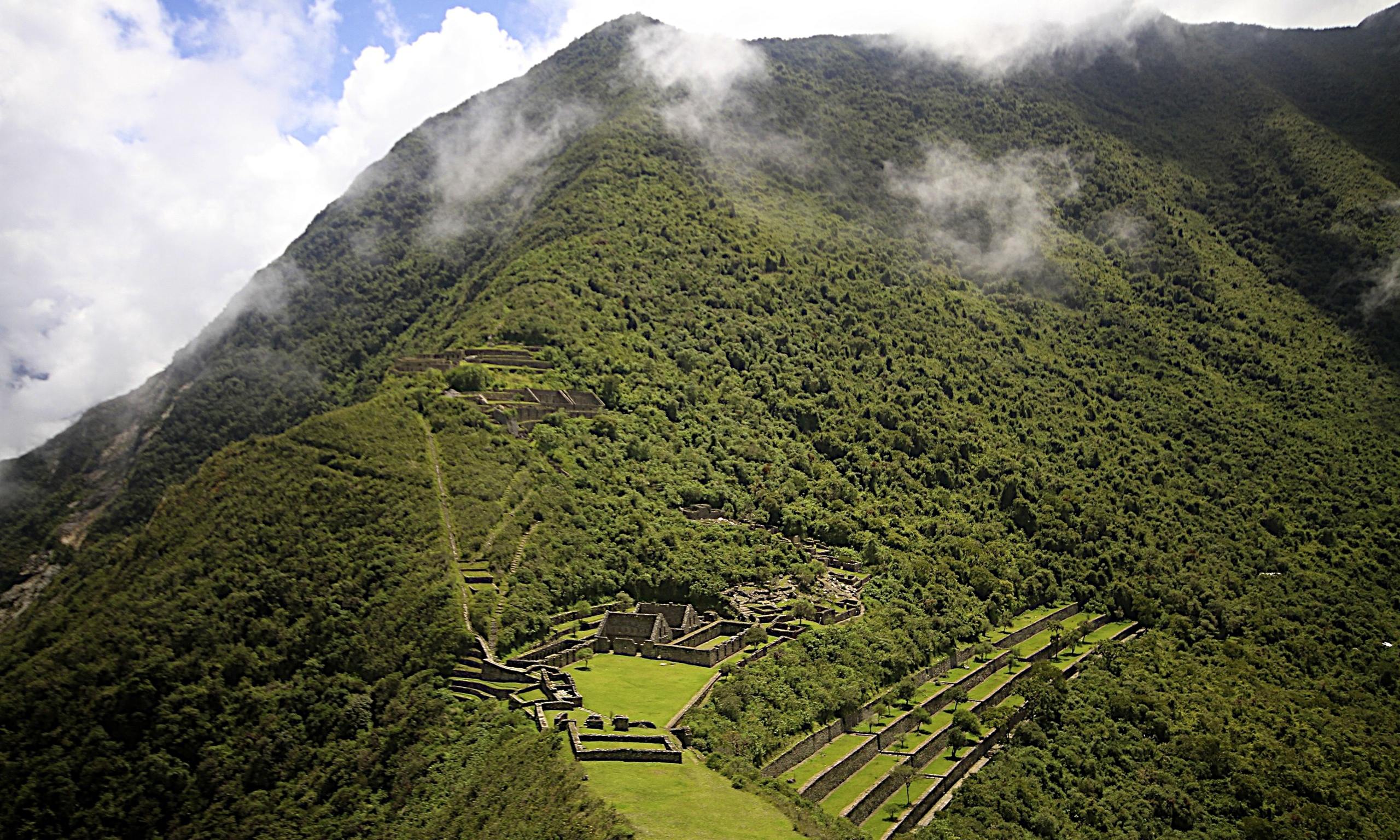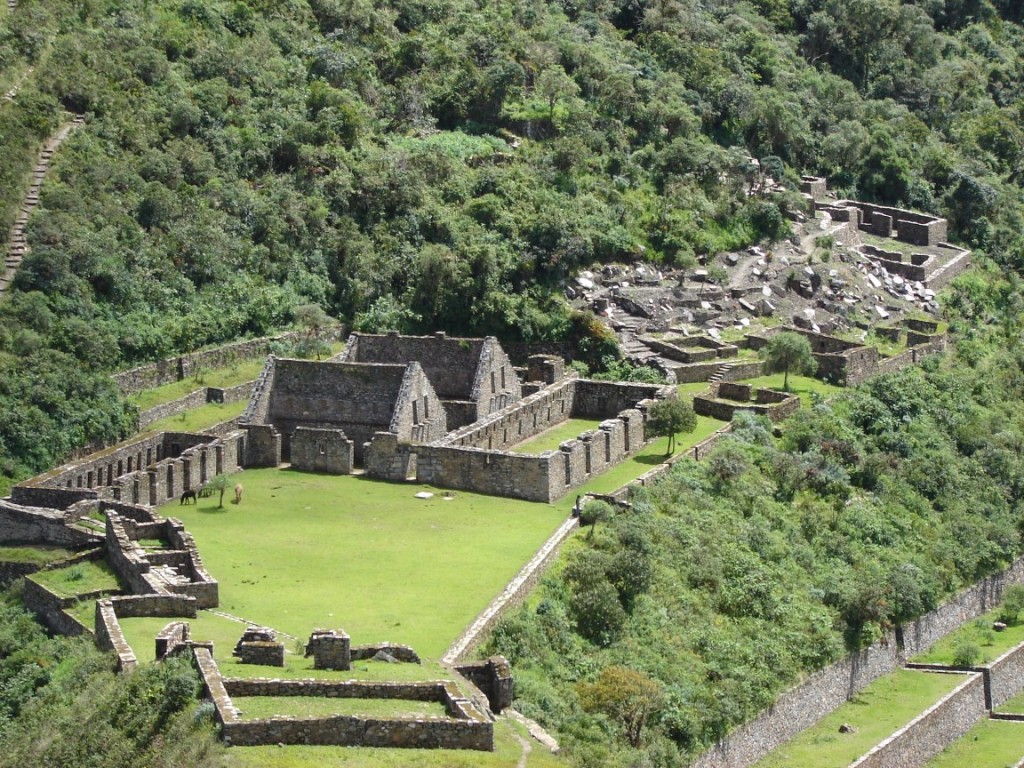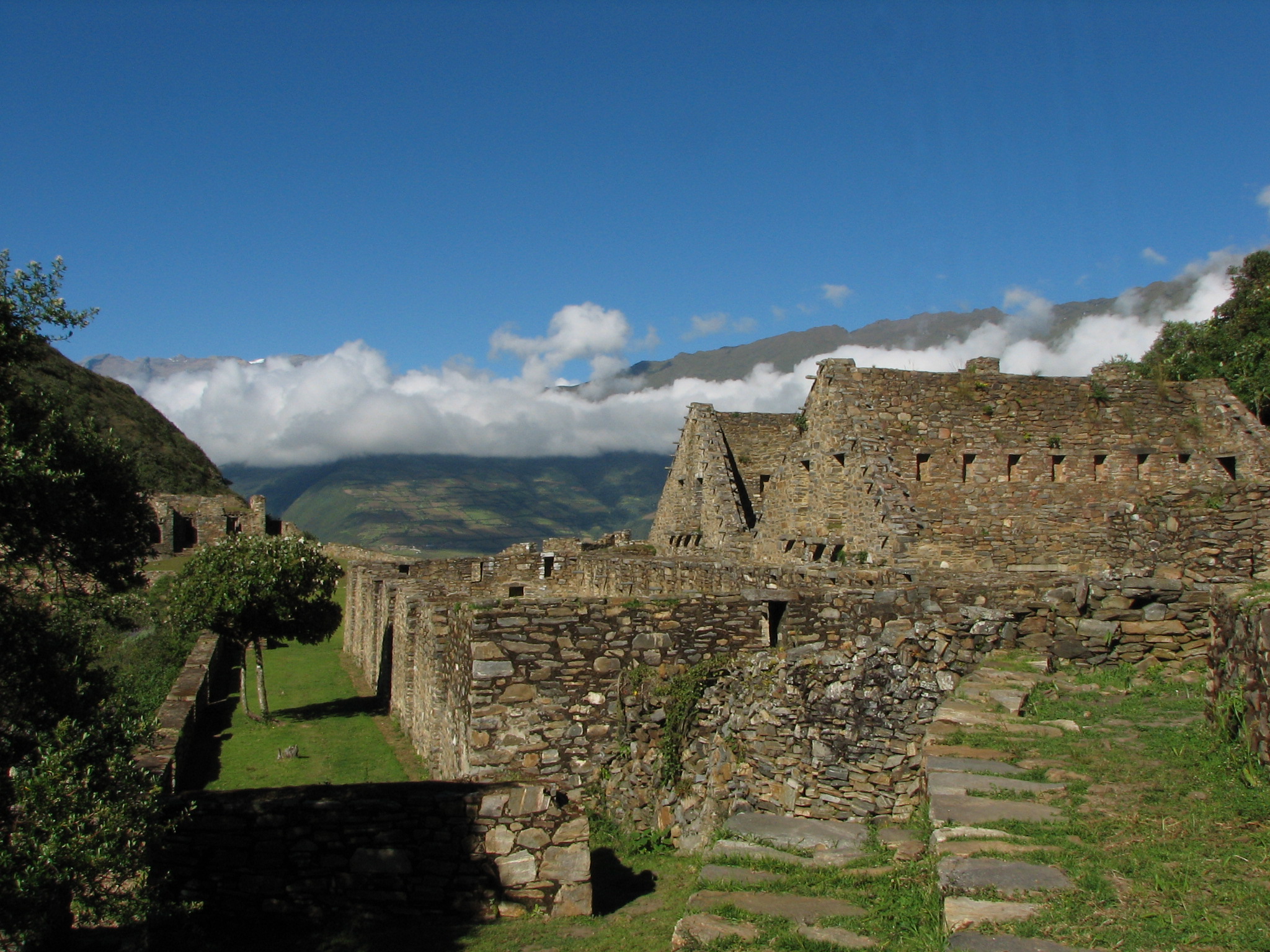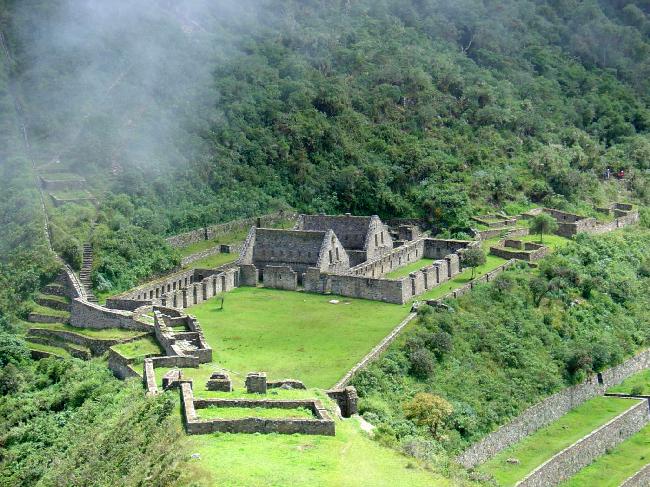Choquequirao
Choquequirao (also: Choquequirau ) is a partially excavated ruins of the Inca city in southern Peru. Because of the similarity in structure and architecture, it is also called " sister of Machu Picchu ".
Location
Choquequirao is situated at 3085 meters above sea level on a mountain in the foothills of the Salkantay mountain range surrounded by snow-capped peaks in the province of La Convención, department of Cusco, Peru, above the Apurimac River. The system can be achieved, which is why it is visited compared to Machu Picchu only by a vanishingly small number of tourists with only one more day walk.
History
The plant was probably in the 15th century. built during the reign of the Inca Pachacutec, and is considered the last bastion of resistance of the Sons of the Sun, who sought refuge after the failed siege of Cusco in 1535 under the Manco Capac II rebel leader within the walls of this place. She was probably a control point for access to the Vilcabamba triangle and cultural and religious center of the region. In addition, the city is attributed an important role as a link between the Amazon jungle and Cusco.
Plant
Choquequirao is applied in typical Inca terraces construction. Around a central square temples and government buildings, and homes of the aristocrats are arranged. In the suburbs are the houses of the rest of the population grouped in small hamlets. The city has many canals, aqueducts and fountains. The buildings are usually remarkably well preserved.
The entire complex covers approximately 1,800 ha, of which 30-40% have been excavated so far. To the east of the main square are the llama terraces which were subsequently mapped in the dark terrace walls with bright stones Lamas. There is a lookout point from which the arrangement of the Lama - portraits are good to see. 2009, the excavations were not yet far enough along to detect the possible existing structure as the pictures. In the south of the main square are extensive terraces directly in front of a steep, deep bottomless pit and a waterfall cascade. Good 3 hours north are more terraces with partially intact irrigation system.
Naming
Since the Inca knew no writing and the city was long forgotten, the original name is not known. The name comes from the Choquequirao Quechua language and is a creation of modern times. It means as much as "cradle of gold"
Discovery
The first written evidence there is from 1768 by Cosme Bueno, but remained largely unnoticed. 1834 saw Eugene de Santiges the city. 1837 created Leonce Agrand the first known maps of the city, but then fell into oblivion. Larger became famous for the site in 1909 by Hiram Bingham, discoverer of Machu Picchu. First excavations took place only in the 1970s. The city had been looted long ago but.










